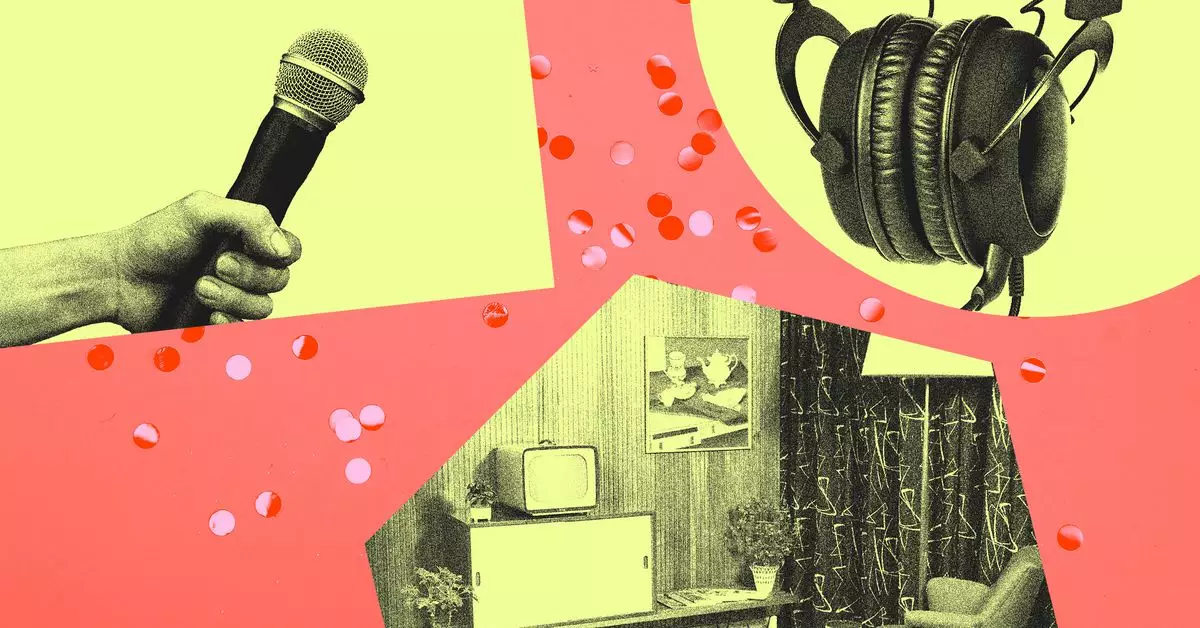The evolution of podcasts has seen a remarkable transition from audio-only formats to a burgeoning video landscape. As we progress through 2024, the dynamics of content consumption are changing significantly. This transformation reflects broader trends in media consumption, particularly among younger audiences. The rapid rise of social media platforms like TikTok, Instagram Reels, and YouTube Shorts has not only influenced how content is created but also how it is consumed. The idea that audio can now switch seamlessly into a visual format speaks volumes about the current climate of digital media.
Podcasts are no longer confined to the auditory realm. Major players, including productions from The New York Times and NPR, have recognized the potential of video. By integrating video components into traditional audio shows, they aim to cater to a wider audience. Spotify, a significant force in the podcasting world, is backing this trend by investing in video content, incentivizing creators to diversify their formats. This development signals a crucial pivot for the industry, wherein producers are encouraged to innovate and experiment with visual storytelling.
The transition to video is partially motivated by the desire to reach younger demographics, many of whom have been raised in a visually-driven content landscape dominated by platforms like YouTube. As audiences seek more engaging ways to consume content, creators are reimagining the podcast format to resonate more with viewers’ expectations, effectively blending traditional podcasting with an interactive experience akin to television.
One noticeable trend in the design of podcast studios is the adoption of warm, inviting aesthetics reminiscent of living rooms or casual lounges. This shift promotes a relaxed atmosphere conducive to long-form conversations. The rise of decor elements like lamps, comfortable seating, and faux greenery reflects a conscious effort by producers to create a home-like microcosm that fosters genuine discussions.
Conversely, this design choice also emphasizes a departure from the sterile environment typically associated with conventional television studios. The presence of elements such as wooden paneling for sound absorption enhances both functionality and visual appeal. This transition not only aids sound quality but also helps in creating a visually engaging space that serves as an attractive backdrop for viewers.
As podcasts shift towards video, the equipment used has come under scrutiny. The traditional microphone stands and large headphones, often seen in audio setups, can clash with the new visual format. Many shows have begun to select smaller, more unobtrusive microphones, like lavalier mics, to ensure that hosts and guests are not overwhelmed by visible gear, thereby preserving an authentic visual experience.
Despite convenience, this switch has its challenges. It may lead to awkward scenarios during recording sessions, especially when guests are inexperienced with using handheld microphones. This reflects the larger challenge of maintaining audio quality while optimizing the visual aspect of the production.
Branding plays a pivotal role in the visual realm of podcasting. Creators increasingly recognize the importance of maintaining a cohesive brand image, often integrating show logos into their environments and graphics. However, this trend raises questions about the effectiveness of such branding strategies, especially in shorter social media clips where the visual design may not translate effectively across formats. The balance between aesthetic appeal and functional branding must be navigated carefully to ensure clarity and focus for the viewer.
As we edge closer to 2025, the evolving landscape of video podcasts suggests we may see a return to diversified formats. Producers may challenge established norms by exploring alternative recording environments and production techniques. As technology continues to advance, we might witness a move away from traditional podcasting terminologies that encapsulate audio-only content. New viewers may begin to categorize these programs simply as “shows,” blurring the line between different forms of media.
Furthermore, as production tools become more accessible, the barrier to entry for aspiring creators shrinks. More hosts will venture outside conventional studio settings, seeking inspiration in unconventional spaces like coffee shops or parks. The increasing capability of post-production tools promises to enhance audio quality, making it possible to deliver professional content from virtually any location.
As the podcasting industry continues to evolve, the blending of audio and visual formats could revolutionize how we perceive and engage with content. By embracing adaptability and learning from the consumer’s desires, podcast creators can ensure that they remain relevant in an ever-changing media landscape. Whether the future demands further innovation or a return to audio-only formats remains to be seen, but one thing is certain: the journey of podcasts is far from over.

